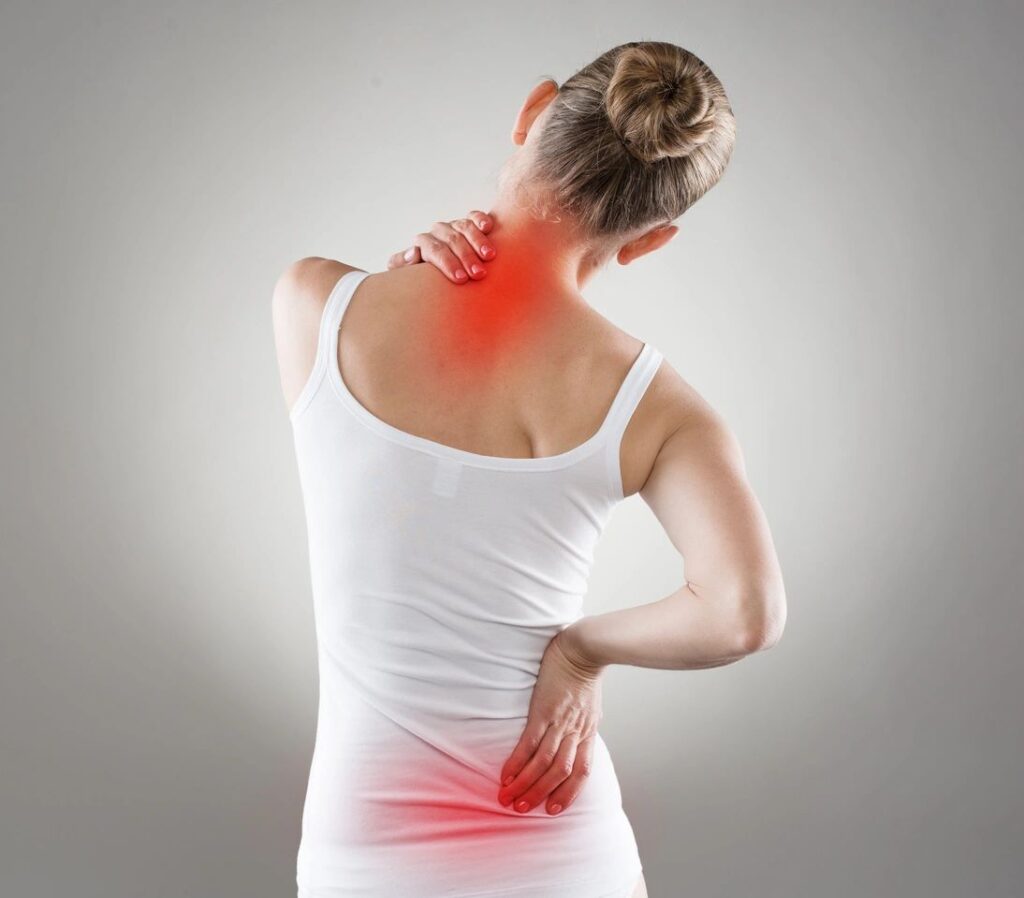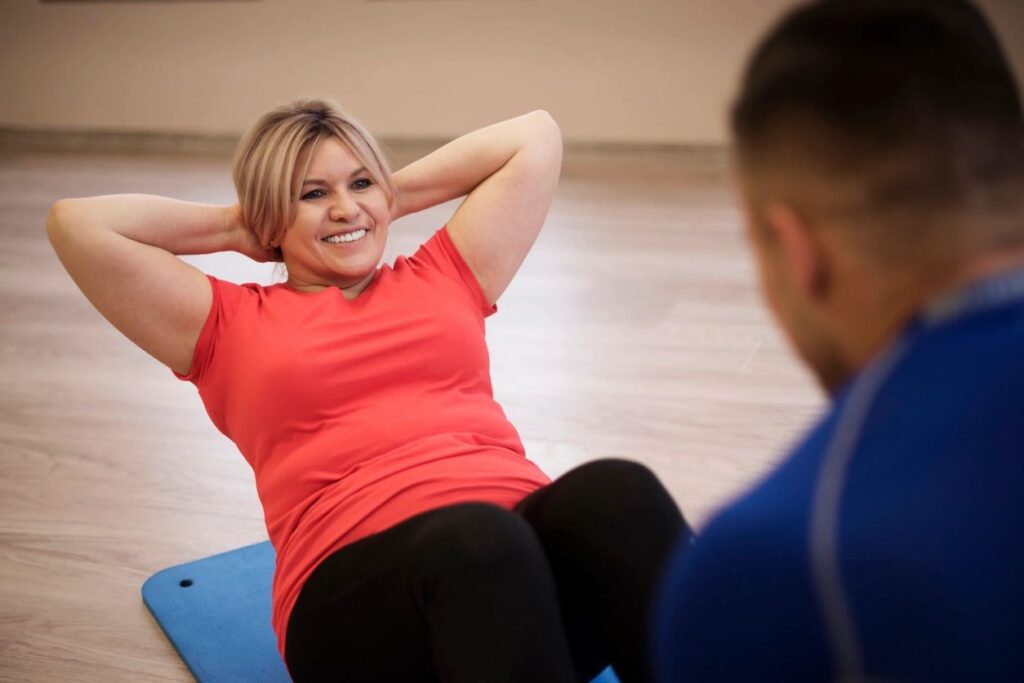5 Tips to Help Prevent Chronic Pain
1. Chronic Pain Can Be Preventable
Chronic pain is persistent pain that can last weeks and even years. It affects more than 20% of American adults, close to 50 million people. Causes of chronic pain include traumatic injury, migraine headaches, degenerative changes, posture issues, nerve damage, congenital conditions, and inflammation. However, pain is much more likely to be associated with inflammation or an inflammatory condition. Inflammatory chronic pain can sometimes be preventable with diet and exercise.

2. Inflammatory Conditions Can Cause Pain
Inflammatory conditions can absolutely cause pain. I have severe degenerative osteoarthritis of the spine. There is no cure. At first diagnosis, in 2015, I was barely able to walk due to severe inflammation. My doctor emphasized the need to reduce my inflammation. In other words, reducing inflammation reduces pain.

Diet and Exercise Reduces Chronic Inflammation

I focused my efforts on diet and exercise instead of taking prescription-level pain medications. Daily low-impact movement combined with an anti-inflammatory food plan changed my life. Within the first week of my anti-inflammatory lifestyle plan, I reduced pain levels by 40%. This enabled me to sleep again and stand upright when walking. In another month my high blood pressure disappeared. I went off of the blood pressure medications I had been on for 15 years. My allergy symptoms reduced as well. I suffered from sinus infections 3 to 5 times per season. I have not had a sinus infection since I started my anti-inflammatory lifestyle plan in 2015.
Gratefully, I learned that by starting an anti-inflammatory lifestyle plan, it is possible to reduce your chronic pain and also reduce other chronic inflammatory conditions. Your body is a system; it is all connected. If you take pain medications for chronic pain, it can temporarily put a band-aid on the pain. Finding the cause and working to repair that issue is a more important goal. Fixing a health issue at the causal level can eliminate the inflammatory condition and help you feel better all around.
List of Chronic Inflammatory Conditions and Disorders
- active hepatitis
- allergies
- arthritis
- asthma
- cancer
- chronic peptic ulcer
- Crohn’s disease
- Diabetes
- gout
- heart disease
- high blood pressure
- lupus
- obesity
- osteoarthritis
- periodontitis
- rheumatoid arthritis
- sinusitis
- stroke
- tuberculosis

3. Chronic Pain Can Cause Depression
Nerve impulses alerting the brain of chronic pain are constantly stimulated. This constant stimulation can cause anxiety, sadness, and depression. No matter the underlying cause, chronic pain can be isolating and depressing. Psychological factors play a part in increasing pain levels. The experience becomes self-perpetuating; we have chronic pain and feel depressed, which triggers more pain and more depression.
Treatments for chronic pain typically include pain medications, surgery, behavioral therapy, acupuncture, trigger point steroidal injections, electrical nerve stimulation, physical therapy, and psychological counseling. Some of these treatments can be helpful. Although some treatments, such as pain medications, can lead to addiction issues which often lead back to depression.
Scientific evidence points to daily non-impact exercise and an anti-inflammatory diet as a way to relieve chronic pain and depression simultaneously.

4. Consuming an Anti-Inflammatory Diet Can Significantly Reduce Chronic Inflammatory Pain
Have you been diagnosed with osteoarthritis, diabetes, heart disease, any other inflammatory disease which compromises your health and might be causing you chronic pain? Typically, a doctor will put you on a diet that is restrictive and tastes like cardboard. You feel upset and hateful about the diet thrust on you. Particularly if you are already depressed, the diet change makes you feel more depressed. Then after a few weeks, you go back to your old way of eating out of frustration.
I know how you feel because I felt the same way. In order to find success with an anti-inflammatory diet, you need to form a plan and discover more flavor. Eliminate the bad foods that are triggering reactions. Then find the specific foods that stop inflammation in your body so that you can begin to heal. This discovery process is best done with the help of a health professional. I suggest that you speak with an Integrative Functional Nutritionist (IFN). Deepa Deshmukh is my IFN nutritionist. Please contact her team HERE for a remote or in-person consult.
I began my anti-inflammatory food plan in 2015. In 5 days, I had 40% less chronic pain. In 5 months, I had 80% less chronic pain. My chronic pain, asthma, allergies, and high blood pressure eased significantly. This miraculous change allows me to sleep, exercise, and live life. All I have to do is consume an anti-inflammatory food plan and do low-impact exercises regularly.

5. Walking and Low Impact Exercises Can Help Lower Inflammation
To be clear, having a healthier diet is not enough to affect all the changes you might like towards better health. With this in mind, I walk at least one hour every day I am able. I found that a food plan only goes so far, as it must absolutely be accompanied by walking or some other form of exercise.
Walking combined with diet can reduce chronic inflammation
If you do no other workout, at the bare minimum, you should walk daily. With the permission of your medical professionals, walking or another low-impact exercise should be the foundational goal you shoot for in kicking your food plan into gear as it keeps your system moving. Your blood is pumping, your joints are liquid, your gut is stimulated, and your energy level is up when you walk daily. This contributes immensely to help you stay motivated and uplifted to continue your food and dietary plan.

Low impact exercises and yoga stretching can help improve your pain
Discovering other forms of doctor-approved exercise which might increase your strength capabilities, extend your joint range, and prevent further deterioration brought on by chronic inflammation can also help. Yoga is a great tool to help you renew strength and extend your flexibility, here you see my dear friends Jenny Nybro Peterson, Terri Curtis, and Jacque Gregory having a yoga session on mats at Jenny’s amazing Berkeley Farm in Austin, Texas.
Other low impact exercises include walking, rowing, swimming, tai chi, dancing, cycling, and strength training. Gardening helps you build muscle strength and also keeps you outdoors in the sunshine; another mood-lifting activity.

Creating a healthy food foundation is just the beginning. Do you want help to keep your food and exercise plan a priority? I can help you! Join my online coaching opportunities, courses, workshops, and more at The Wellness University, right here on my website.
Today is the first day of the rest of your life – GET TO IT!
Read a few Frequently Asked Questions below.
Yes! Your health professional can guide you on a smart anti-inflammatory lifestyle plan. This plan should include a food plan and exercise regimen which is individualized and based on your physical and emotional needs.
It can. Australian researcher Sylvia Gustin has discovered that alterations in brain chemistry happen with people who suffer chronic pain. Often, patients will be more negative, fearful, and pessimistic.




